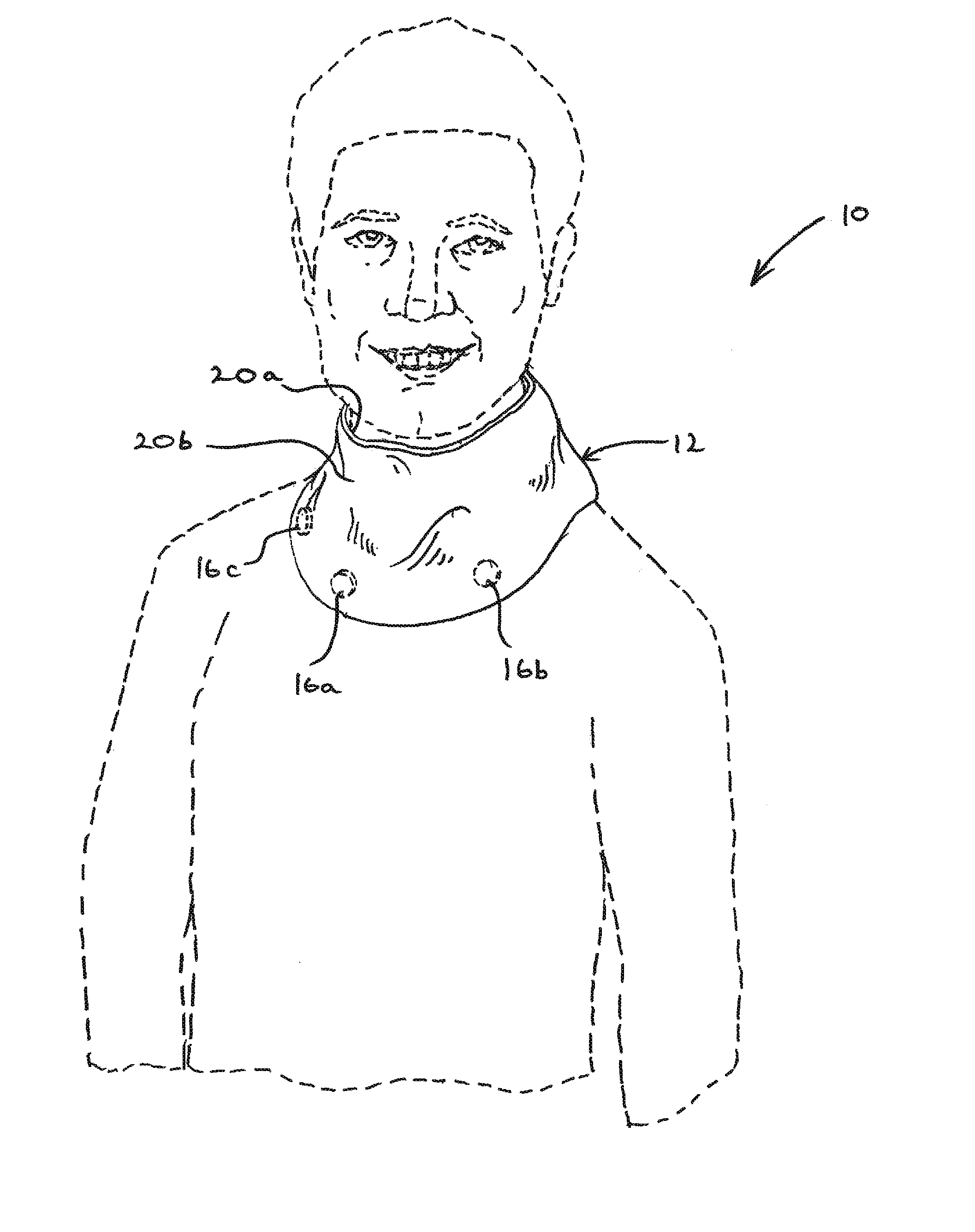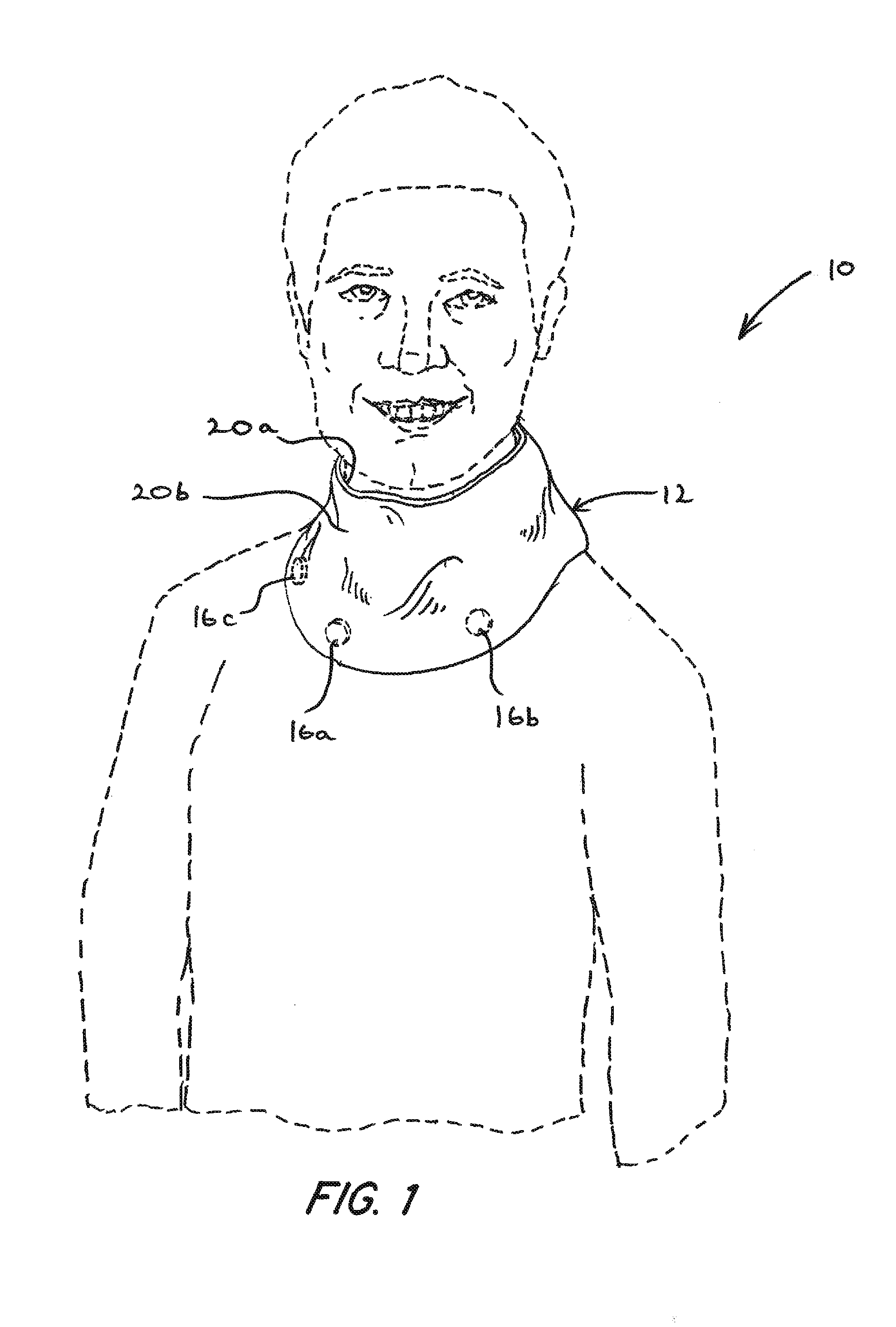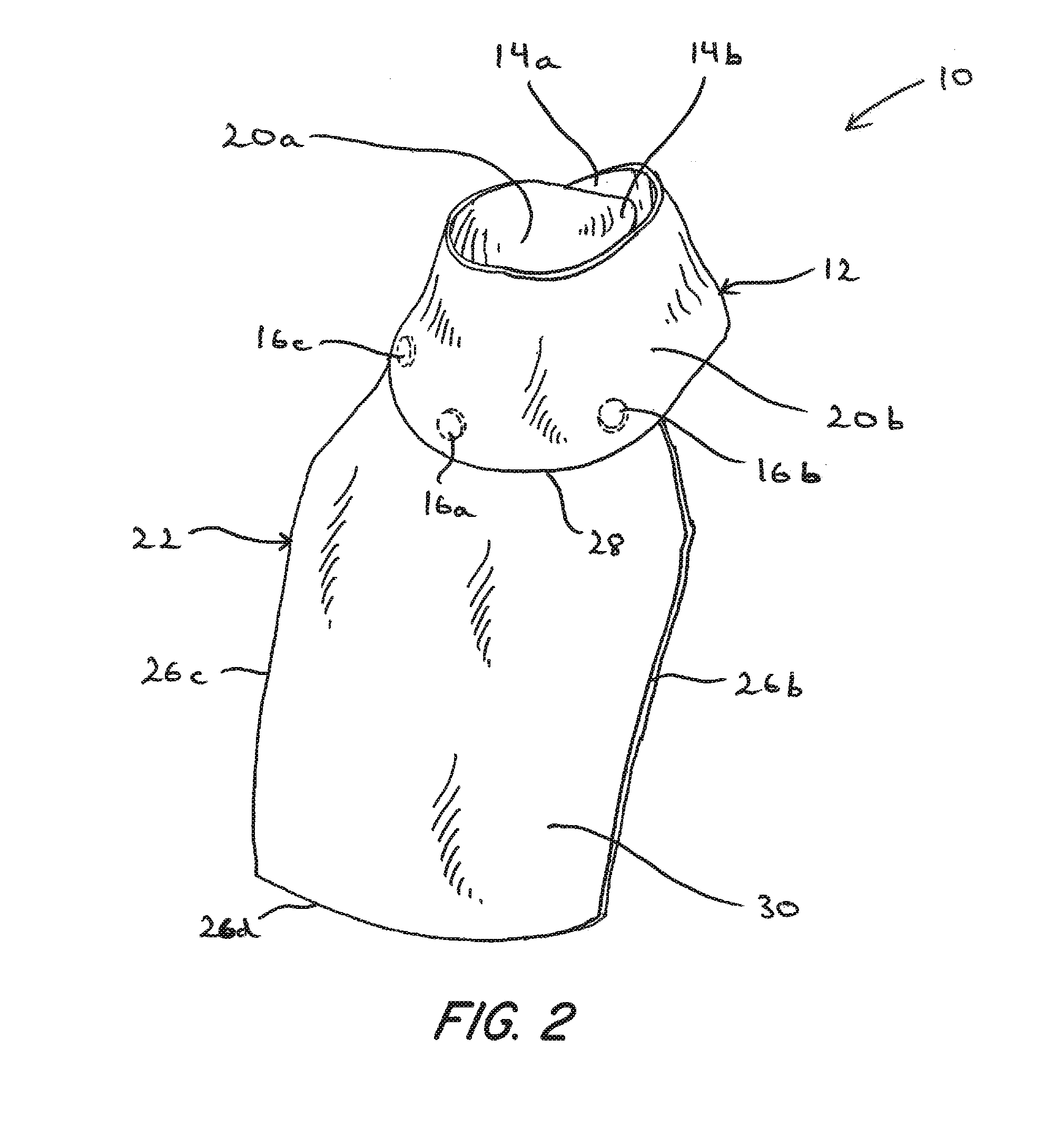For example, due to its substantial length and the need to tie a knot, the scarf usually forms a bulky
mass in front of the wearer's neck and chest, which detracts from the overall fashion style the wearer may be trying to achieve.
Further, the outer garment may not be designed with a wide neck opening to allow the
mass and ends of the scarf to be tucked therein.
Conversely, the scarf may interfere with the complete closure of one or more fasteners (e.g., zipper, buttons) of the outer garment.
Such constraint on maneuverability may be unfavorable for people who are involved in activities which require uninhibited movement.
The design of the conventional scarf also makes the garment difficult to don and / or doff (remove) from the neck.
The conventional scarf may be hard to tie, and its design can lead to unwanted knots or weak knots.
This
disadvantage further prevents the scarf from being securely and firmly wrapped around the neck.
Often, when the wearer naturally shifts his or her head and / or neck, the scarf loosens or comes undone.
This renders the scarf ineffective in protecting the person from the cold as well as providing steady warmth to the neck and chest regions.
An additional drawback of the conventional scarf relates to the danger posed by the scarf's dangling ends.
In particular, if the scarf is worn and knotted around the neck while the wearer is operating equipment or heavy machinery, such as a bicycle or
cutting machine, there is the potential that the ends may tangle with the
machine and cause serious injury to the wearer.
Another drawback of the conventional scarf is that it lacks the means to effectively cover and warm both the chest and neck simultaneously.
The remaining portion of the scarf which is available is unsecured and “criss-crossed.” As a result, the conventional scarf fails to provide a gap-free “blanketing” effect to the wearer's chest.
Conversely, if the wearer tries to “criss-cross” more of the scarf over the chest, it is usually at the expense of providing sufficient cover to the neck, thereby leaving part of the neck exposed to inclement weather, including rain,
snow, wind, and cold temperatures.
As a further drawback, the conventional scarf lacks the ability to convert into different configurations in order to adjust to different environments or conditions that the wearer is in and meet the needs and preferences of the wearer.
For example, while conventional scarves are meant to help protect and warm areas of the body from inclement weather, they can lead to overheating as heat generated by the individual continues to build around the neck or
chest region (e.g., when the wearer is engaged in physically demanding activity).
The conventional scarf has no easy or effective way of being converted into different configurations.
However, the tubular configuration requires that the person pull the neck garment over the head and face, potentially disrupting / disturbing one's hair and / or makeup.
Consequently, the neck garment of Baker still does not provide for easy donning and doffing.
In addition, the neck garment does not provide sufficient protection and warmth to the chest nor can it be configured to do so.
The scarf, however, provides warmth only to the neck while leaving the chest unprotected.
Further, the design of the scarf involves it being fastened in the front of the neck, such that a portion of the neck adjacent to the wearer's
upper chest remains unprotected.
As a result, the scarf is not adapted to be converted or adjusted such that it can accommodate different environments and / or the needs and preferences of the wearer.
The scarf is unable to provide warmth to the neck only, to the chest only, and to both the neck and chest in separate instances.
However, if the wearer chooses not to cover his or her
lower face, the extra fabric must be folded or shifted underneath the neck.
This causes the neck piece to be bulky and
restrict the wearer's ability to naturally move his or her face, neck, and shoulders.
With additional fabric covering the neck, the neck piece may also produce excessive warmth around the neck.
More importantly, the scarf of Mustata poses a potential safety
hazard.
With permanent attachment between the neck piece and chest piece, the wearer can suffer
severe injury.
Even if the extension were folded and repositioned underneath the wearer's
chin, the additional fabric around the neck may
restrict free and natural movement of the face, neck, and shoulders.
In addition, the extra bulk created by the neck piece may cause excessive warmth around the neck.
While the prior art scarves provide improvements over conventional scarves, such as easier donning and doffing steps, they still suffer from several disadvantages.
The prior art scarves are also not adjustable or configurable so as to accommodate different environments and / or the needs of the wearer.
Another disadvantage of the prior art scarves is the potential danger created by their dangling ends.
In addition, although some of the prior art scarves protect a large area of the wearer's body, it comes at the expense of its appearance, thereby detracting from wearer's fashion style.
 Login to View More
Login to View More  Login to View More
Login to View More 


